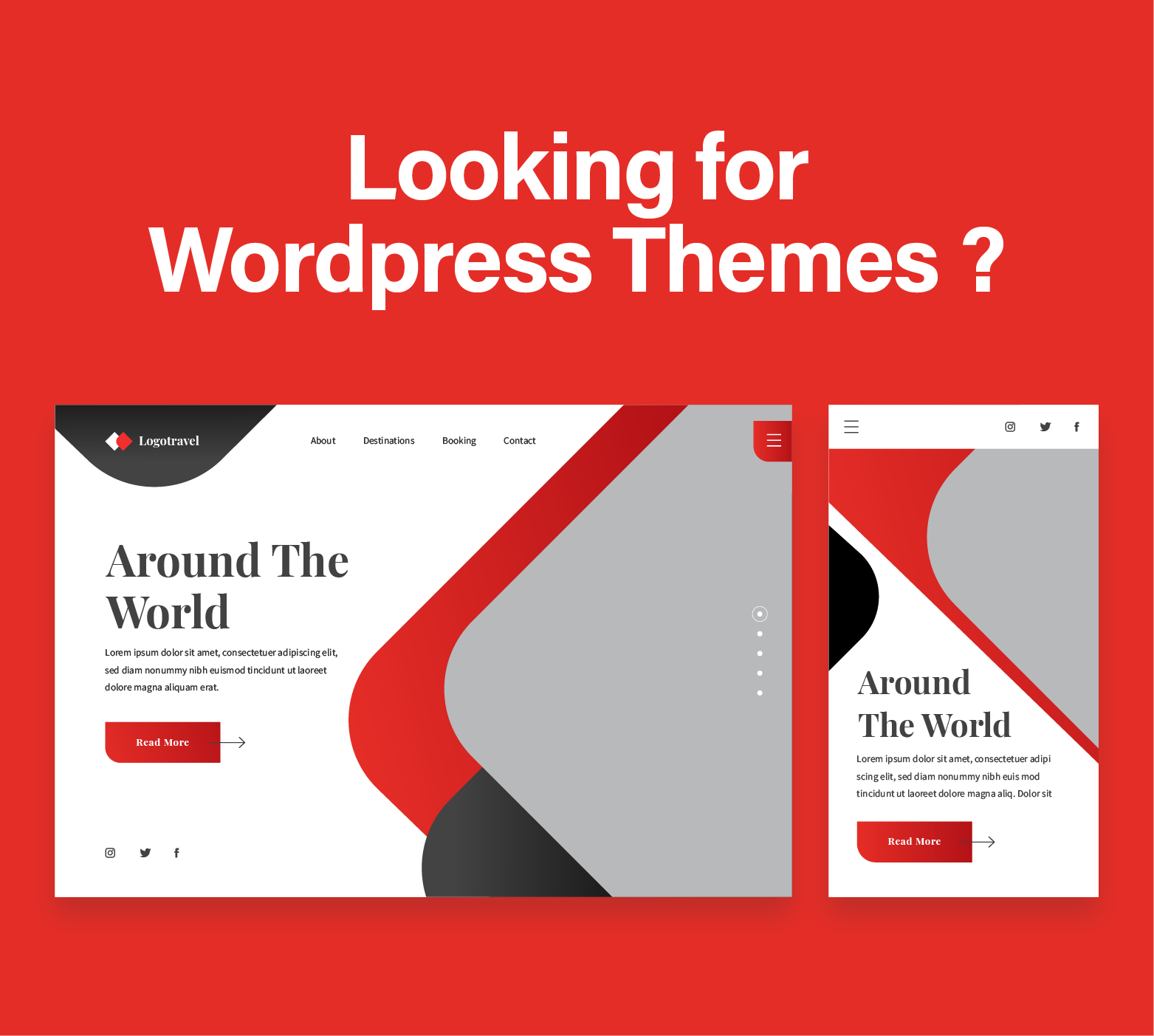In the vast world of web design, choosing the right CSS framework is very important for creating responsive, visually appealing websites. Luckly there are many frameworks out there but in this article we will talk about the most famous ones. Tailwind and Bootstrap are two of the most popular CSS frameworks, and each of them is offering distinct features and benefits.
We are a web design agency and we know that understanding the differences between these frameworks can help us provide the best solutions to our clients. This article delves into the Tailwind vs. Bootstrap debate, guiding you in choosing the right framework for your next project.
If you need web design services we are offering one of the most affordable prices, excellent responsiveness and fantastic customer support. Lets get into a call and start your website.
Introduction to Tailwind and Bootstrap
What is Bootstrap?
Bootstrap, developed by Twitter in 2011, is a widely-used CSS framework that simplifies web development by providing pre-designed components and a responsive grid system. It allows developers to quickly create modern, mobile-first websites with minimal custom CSS. Bootstrap’s comprehensive library of UI elements, such as buttons, forms, modals, and navigation bars, helps maintain consistency across web projects.
What is Tailwind?
Tailwind CSS, introduced by Adam Wathan in 2017, is a utility-first CSS framework that offers low-level utility classes for building custom designs directly in HTML. Unlike traditional CSS frameworks, Tailwind doesn’t provide pre-designed components. Instead, it gives developers the tools to create bespoke designs without leaving their HTML. Tailwind promotes a more granular and flexible approach to styling, making it easier to implement unique designs.
Key Differences Between Tailwind and Bootstrap
Design Philosophy
Bootstrap follows a component-based approach, offering a wide range of pre-designed UI components that can be easily customized using its built-in classes. This makes it ideal for developers looking to quickly build consistent and polished interfaces without starting from scratch. Bootstrap’s opinionated design system ensures a cohesive look and feel, but it can sometimes result in a more uniform appearance across different projects.
Tailwind adopts a utility-first approach, focusing on providing low-level utility classes that can be combined to create custom designs. This gives developers greater control over the styling of their elements and encourages a more creative and personalized design process. Tailwind’s flexibility allows for unique designs but requires a more hands-on approach compared to Bootstrap.
Customization
Bootstrap offers a variety of customization options through its Sass variables and theming capabilities. Developers can override default styles, colors, and components to align with their design requirements. However, extensive customization can sometimes be challenging due to the framework’s opinionated nature and predefined styles.
Tailwind excels in customization, as it is designed to be highly configurable. Developers can modify the default configuration, add custom utility classes, and even extend the framework with plugins. Tailwind’s configuration file allows for easy adjustments to colors, spacing, typography, and more, providing unparalleled flexibility in tailoring designs to specific needs.
Learning Curve
Bootstrap is known for its ease of use and beginner-friendly documentation. Its pre-designed components and straightforward class names make it accessible to developers of all skill levels. Even those with limited CSS knowledge can quickly create professional-looking websites using Bootstrap’s extensive library of components and responsive grid system.
Tailwind’s utility-first approach can be initially challenging for developers unfamiliar with the concept. The extensive use of utility classes may seem overwhelming at first, but once mastered, it allows for faster and more efficient development. Tailwind’s comprehensive documentation and growing community support can help ease the learning process.
Performance
Bootstrap’s component-based structure can sometimes result in larger CSS files, as unused styles are included by default. However, tools like PurgeCSS can be used to remove unused CSS and optimize performance. Despite this, Bootstrap’s focus on pre-designed components can lead to bulkier final builds compared to utility-first frameworks.
Tailwind’s utility-first approach naturally leads to smaller CSS files, as only the classes used in the project are included. This can significantly improve performance, particularly for large-scale applications. Tailwind also supports features like Just-in-Time (JIT) mode, which generates styles on demand, further enhancing performance by minimizing the amount of unused CSS.
Use Cases and Suitability
When to Use Bootstrap
- Quick Prototyping: Bootstrap’s extensive library of pre-designed components makes it ideal for quickly building prototypes and MVPs (Minimum Viable Products).
- Consistency Across Projects: For projects that require a consistent look and feel, Bootstrap’s opinionated design system ensures uniformity and cohesiveness.
- Team Collaboration: Bootstrap’s ease of use and well-documented components make it suitable for teams with varying levels of CSS expertise, enabling efficient collaboration and faster development.
- Legacy Projects: If maintaining or updating an existing project built with Bootstrap, continuing to use Bootstrap can ensure compatibility and reduce the learning curve for new developers.
When to Use Tailwind
- Custom Designs: Tailwind’s utility-first approach provides the flexibility needed to create unique and highly customized designs, making it ideal for projects where creativity and differentiation are key.
- Performance-Critical Applications: Tailwind’s leaner CSS output and Just-in-Time mode can significantly improve performance, making it suitable for applications where load times and responsiveness are crucial.
- Developer Efficiency: For developers familiar with Tailwind’s utility classes, the framework can speed up development by reducing the need for writing custom CSS and enabling inline styling directly in HTML.
- Modern Development Practices: Tailwind’s integration with modern development tools and workflows, such as PostCSS and PurgeCSS, makes it a good fit for teams adopting the latest web development practices.
Pros and Cons of Tailwind and Bootstrap
Bootstrap
Pros:
- Ease of Use: Beginner-friendly with extensive documentation.
- Pre-designed Components: Large library of ready-to-use UI components.
- Consistent Design: Ensures uniform look and feel across projects.
- Community Support: Large and active community with numerous resources.
Cons:
- Customization Limitations: Opinionated design can make extensive customization challenging.
- Performance: Larger CSS files due to unused styles.
- Uniform Appearance: Projects can look similar if not heavily customized.
Tailwind
Pros:
- Customization: Highly flexible and configurable for unique designs.
- Performance: Smaller CSS files and efficient Just-in-Time mode.
- Developer Efficiency: Utility classes enable rapid development.
- Modern Practices: Integrates well with contemporary development tools.
Cons:
- Learning Curve: Initial learning curve for those unfamiliar with utility-first CSS.
- No Pre-designed Components: Requires more effort to create components from scratch.
- Community Size: Smaller community compared to Bootstrap, though rapidly growing.
Conclusion: Which CSS Framework is Better?
The choice between Tailwind and Bootstrap depends on your project’s specific requirements, design goals, and team expertise. Both frameworks offer powerful tools to create responsive, visually appealing websites, but they excel in different areas.
Bootstrap is a robust, mature framework with a rich set of pre-designed components and a consistent design system. It’s an excellent choice for quick prototyping, projects requiring uniformity, and teams with varying levels of CSS expertise. If you need a reliable, well-documented framework with extensive community support, Bootstrap is likely the better choice.
Tailwind provides unmatched flexibility and performance with its utility-first approach. It’s ideal for custom designs, performance-critical applications, and developers who prefer a more hands-on approach to styling. Tailwind’s modern development practices and leaner CSS output can give your projects a competitive edge in terms of speed and uniqueness.
As a web design agency, our goal is to deliver the best solutions tailored to our clients’ needs. By understanding the key differences between Tailwind and Bootstrap, we can make informed decisions and leverage the strengths of each framework to build high-quality, efficient, and visually stunning websites. Whether you choose Bootstrap’s comprehensive component library or Tailwind’s customizable utility classes, both frameworks offer powerful tools to create exceptional web experiences.
Try our affordable web design services today and hire us to build your next website or e-commerce project.
Other comparisons








